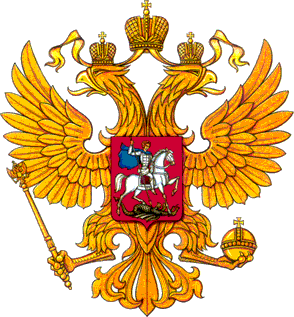This week, we continue on with readings about ASEAN, but this time focusing squarely on the military challenges facing the grouping. The readings:
Joshua H. Ho, The Security of Sea Lanes in Southeast Asia, Asian Survey August 2006. John F. Bradford, The Growing Prospects for Maritime Security Cooperation in Southeast Asia,
Naval War College Review, Summer 2005Richard A. Bitzinger, “Come the Revolution”, Naval War College Review, Autumn 2005
Eric A. McVadon, China’s Maturing Navy, Naval War College Review, Spring 2006
Ho: This piece starts off on an odd note, as it compares the economies of China, Japan, and India (combined) to that of the US and EU. This seems to me to be a rather large mistake; Japan is already the second largest economy in the world and both Japan and India have long-standing tensions with China. To just lump them together, and say that combined they have half of the GDP of the US right now and that by 2015 they will (again, combined) surpass the US and EU (not combined) seems kind of silly and pointless, except as a possible scare tactic.
But, all of that is pretty secondary, as Ho is just trying to make the point that "the sea lanes along Southeast Asia are vital to the transportation of goods, energy, and raw materials to the dynamic economies of Northeast Asia". One does not need to resort to hyperbole or geostrategically meaningless claims to make this point.
The actual meat of the article gives a good account of all the ways the countries in the region (and beyond) are working together to combat piracy. I was unaware of the sheer number of different multilateral groupings in Southeast Asia, and will need to do some research later into the Western Pacific Naval Symposium, as it strikes me as a potentially very useful group for peace in the general area. There really isn't a conclusion to the piece however, other than "maritime crime is bad for everyone".
Bradford: This piece takes some of that logic, and takes it a step further, giving recommendations on the kinds of cooperation are necessary. Of course, this piece is a little dated now (because piracy in the region has decreased dramatically). In many ways, this week's readings are merely reiterating those from several weeks ago about piracy in Southeast Asia. I expected more ASEAN this week, and less general "piracy bad" stuff.
Of most importance in this reading is Bradford's defense of bilateral cooperation, and in particular his push to make that the main kind of cooperation in the region. The general idea is that, while multilateral grouping have more theoretical power, any grouping can only do as much as the "least keen" member wants. In a bilateral situation, you can reach the level that both want, but dragging in additional members would lower the amount that can actually be done. Even more interesting is his push for a "network" of such alliances, where the countries involved establish these bilateral ties to the extent they can with each country of importance. I think there is an interesting idea here for US strategy to the region as a whole (something I have been thinking on recently), as a way to move away from the "hub and spokes".
Bitzinger: This pieces if focusing on the possibility of modernizing the militaries of the states in the "Asian Pacific." In essence, the many governments of the area (including potential rivals like China and strong allies like South Korea, Japan, and Australia) have been paying a lot of lip service to creating their own "Revolution in Military Affairs" much like the vaunted US one, but none of the countries have really gone beyond buying new equipment. This should be seen as good news for the US, since preserving the status quo in the region is great for the unipolar power. Of course, the problem is that the one country that has gone the furthest on this is the one that is the most likely rival, China. Also problematic is that China may be seeking to counter the US advantage, rather than imitating the US's form of RMA. On the other hand, so far, China's "modernization" of their Navy and Air Force have been rather lacking, and much of the increase in spending has been instead on "legacy" and high-visibility items. While we have many of the same problems (F-22 anyone?), there has been more push for the command-and-control, intelligence, etc., items needed for the real high-tech revolution.
As an aside, I'm not sure that China has the internal conditions necessary to fight according to Biddle's ideas of "modern warfare", due to the large class and ethnic problems within the country. It would be interesting to see an analysis of that.
McVadon: This is a piece explicitly about the Chinese navy, which poses the largest threat to American interests in the entire world, and especially in the Pacific. He describes it as not a mature navy, but instead "adolescent." In effect, it has a nearly-mature body (platforms and weapons) but the mind is still very adolescent (command/control, doctrine, etc.) Also, the ability to coordinate the different forces is still very weak; supposedly, many PLA generals still treat the PLAN as an adjunct, rather than a co-equal force.
His overall conclusion is one that slightly contradicts the RAND report I read earlier this year about a Chinese attack on Taiwan. The RAND report states that Taiwan could most likely fend off a Chinese invasion; McVadon believes that Taiwan would succumb. However, that is only an incidental point to him; his main point is that the US could still defeat the PLAN if the US got involved. Mostly, this is due to the lack of experience with new forms of warfare in the PLAN.
To sum up the readings: The maritime is one area where the US maintains a clear superiority, but there is ample concern about non-state threats that will require the cooperation of the whole region. The US obviously cannot force this, but offering to assist in ways specified by the governments in the area could be invaluable. The fight against piracy has already shown what that kind of cooperation can do, and hopefully it can be a model for the future and thus keep conflict and war low in the region.












